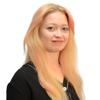What Does Trump's CBDC Ban Mean for Digital Payments?
US President Donald Trump has signed an executive order that prevents federal agencies from issuing or endorsing central bank digital currencies (CBDCs). The order, titled Strengthening American Leadership in Digital Financial Technology, was signed on 23rd January 2025, and highlights concerns about the risks CBDCs pose to financial stability and privacy.
Trump’s directive makes the position clear:
“Measures will be taken to protect Americans from the risks of CBDCs, which threaten financial system stability, individual privacy, and US sovereignty. This includes prohibiting the establishment, issuance, and use of CBDCs within the United States.”
However, the order doesn’t just block CBDCs – it also promotes the development of digital assets and blockchain technologies, with key provisions including:
- Advancing the global growth of dollar-backed stablecoins.
- Safeguarding citizens and businesses’ rights to access open blockchain networks without the threat of unlawful censorship.
- Promoting fair access to banking services for law-abiding citizens and businesses.
- Creating a President’s Working Group on Digital Asset Markets, chaired by the Special Advisor for AI and Crypto.
Our View
By endorsing private digital currencies over CBDCs, the US may trigger a new wave of innovation in digital payments. Focusing on the development of stablecoins and private digital currencies could pave the way for more efficient, borderless payment systems that benefit both businesses and consumers. For example, Tether – the issuer behind the world’s most used stablecoin – announced $13.7 billion in profits for 2025, half of which will be reinvested into new ventures, including expansions into telecoms, AI, and new financial services.
Stablecoins also offer significant advantages for businesses making cross-border payments, eliminating foreign exchange fees and enabling instant transactions regardless of location. While CBDCs are still working on similar capabilities, many countries are experimenting with linking their digital currencies for global use.
However, endorsing private currencies raises concerns about market stability. The 2022 collapse of Terra Luna – a stablecoin that lost its 1:1 peg to the dollar – showed how easily such currencies can destabilise financial markets. If similar crashes occur, they could undermine confidence in the entire digital currency market and create systemic risks.
Despite these concerns, regulatory oversight of private digital currencies could restore investor confidence and promote wider adoption. Proper regulation would help stabilise the market, much like the recent delisting of Tether’s USDT in Europe, where stricter crypto regulations are being introduced. A more favourable US regulatory approach could boost the market, ensuring stablecoin listings stay strong.
For major stablecoin issuers like Ripple and Tether, this shift could offer significant advantages. Ripple’s RLUSD stablecoin, designed for large institutional payments, could thrive in a crypto-positive regulatory environment. The backing of private digital currencies might also ease concerns from institutional players, which are crucial for scaling digital currency adoption.
How Risky is De-dollarisation for the US?
As the US dollar remains the cornerstone of global trade, the rise of CBDCs in other nations could reduce the dollar’s dominance. The US’s refusal to embrace a digital version of its currency might leave it trailing behind as other countries push forward with CBDC adoption.
China, for example, is leading the way with its digital yuan, already being tested in several major cities and international events. This progress is part of the mBridge cross-border project, which aims to create alternatives to the SWIFT system and reduce reliance on the US dollar. Countries like the UAE are already exploring digital yuan use, and the BRICS nations have discussed using CBDCs for cross-border transactions, further threatening the dollar’s grip on global finance.
Conversely, US-backed stablecoins could help maintain the dollar’s dominance. Since most stablecoins, such as USD Coin and Tether, are pegged to the US dollar, transactions using these stablecoins would likely continue to rely on dollar-backed assets. However, private stablecoins may struggle to scale as quickly as centrally-mandated CBDCs, which could impact their role in global trade.
The Struggle for Monetary Sovereignty
Central banks have long cited the rise of cryptocurrencies as a threat to their control over monetary policy, particularly given that stablecoins essentially perform the same functions as CBDCs. By advocating for cryptocurrencies over CBDCs, the US may be allowing private companies to dominate the digital currency space, potentially eroding government control over economic policy.
With an increasing volume of transactions flowing through stablecoins, the US Federal Reserve could find it more challenging to manage inflation or respond to financial crises. Preserving control over currency issuance and monetary policy remains a key motivator for central banks, as it ensures they can guide the economy and maintain financial stability.
Lorien is a Research Analyst in the Fintech and Payments team at Juniper Research, and specialises in analysing and forecasting emerging trends and innovations in financial markets. Her latest reports have covered topics including Virtual Cards, Network Tokenisation, and CBDCs & Stablecoins.
Latest research, whitepapers & press releases
-
 ReportNovember 2025Telecoms & Connectivity
ReportNovember 2025Telecoms & ConnectivityeSIMs & iSIMs Market: 2025-2030
Juniper Research’s eSIMs and iSIMs research suite offers insightful analysis of a market set to experience significant growth in the next five years. The research suite provides mobile network operators (MNOs), original equipment manufacturers (OEMs), and eSIM management and platforms vendors with intelligence on how to capitalise on the market growth, and guidance on how eSIM-only devices and sensors, SGP.42, in-factory provisioning, and iSIMs will change the competitive landscape.
VIEW -
 ReportNovember 2025Fintech & Payments
ReportNovember 2025Fintech & PaymentsModern Card Issuing Platforms Market: 2025-2030
Our Modern Card Issuing Platforms Market research suite provides a detailed and insightful analysis of this evolving market; enabling stakeholders from banks, financial institutions, fintech companies, and technology vendors to understand future growth, key trends, and the competitive environment.
VIEW -
 ReportNovember 2025Fintech & Payments
ReportNovember 2025Fintech & PaymentsDigital Wallets Market: 2025-2030
Our digital wallets research suite provides detailed analysis of this rapidly changing market; allowing digital wallet providers to gain an understanding of key payment trends and challenges, potential growth opportunities, and the competitive environment.
VIEW -
 ReportOctober 2025Fintech & Payments
ReportOctober 2025Fintech & PaymentsDigital Identity Market: 2025-2030
Juniper Research’s Digital Identity research suite provides a comprehensive and insightful analysis of this market; enabling stakeholders, including digital identity platform providers, digital identity verification providers, government agencies, banks, and many others, to understand future growth, key trends, and the competitive environment.
VIEW -
 ReportOctober 2025Telecoms & Connectivity
ReportOctober 2025Telecoms & ConnectivityTravel eSIM Market: 2025-2030
Our comprehensive Travel eSIMs research suite comprises detailed assessment of a market undergoing rapid growth. It provides insight into how travel eSIM providers can differentiate their services to maximise success in the market over the next two years.
VIEW -
 ReportOctober 2025IoT & Emerging Technology
ReportOctober 2025IoT & Emerging TechnologyDirect to Satellite Market: 2025-2030
Juniper Research’s Direct to Satellite research suite provides satellite providers, investors, and partners, such as Mobile Network Operators, with an extensive analysis and insights into the direct to satellite market.
VIEW
-
 WhitepaperNovember 2025Telecoms & Connectivity
WhitepaperNovember 2025Telecoms & ConnectivityeSIM-only Devices: The Impact on Operators, Consumers, and IoT
Our complimentary whitepaper, eSIM-only Devices: The Impact on Operators, Consumers, and IoT, explores the challenges and opportunities for the three segments, with a particular focus on eSIM-only smartphones and SGP.42.
VIEW -
 WhitepaperNovember 2025Fintech & Payments
WhitepaperNovember 2025Fintech & PaymentsUnlocking the Next Stage of Growth for Modern Card Issuing Platforms
This free whitepaper analyses key trends shaping the modern card issuing space, and the ways in which modern card issuing platforms can capture growth.
VIEW -
 WhitepaperNovember 2025Fintech & Payments
WhitepaperNovember 2025Fintech & PaymentsTop 10 Fintech & Payments Trends 2026
Fintech is evolving fast. From stablecoins to agentic AI, our annual guide reveals the shifts redefining payments, digital identity, and the future of money in 2026. Download your copy today.
VIEW -
 WhitepaperNovember 2025Fintech & Payments
WhitepaperNovember 2025Fintech & PaymentsDigital Wallets: Empowering Financial Inclusivity
Our complimentary whitepaper, Digital Wallets: Empowering Financial Inclusivity, examines the state of the digital wallets market; considering the impact of digital wallets on different geographies, how they are shaping the modern payments landscape through lower transaction fees and promoting financial inclusivity for underbanked populations, and how they are competing with established payment methods.
VIEW -
 WhitepaperNovember 2025Telecoms & Connectivity
WhitepaperNovember 2025Telecoms & ConnectivityTop 10 Telecoms & Connectivity Trends 2026
The next phase of telecoms isn’t coming — it’s already here. From AI agents to new network models, our guide shows what’s changing right now and how it’s transforming the business of connectivity. Download your copy today.
VIEW -
 WhitepaperOctober 2025Fintech & Payments
WhitepaperOctober 2025Fintech & PaymentsHow Digital Identity is Going Mainstream
Our complimentary whitepaper, How Digital Identity is Going Mainstream, assesses the trends that are moving digital identity to be increasingly popular, and challenges to digital identity growth.
VIEW
-
Fintech & Payments
AML Adoption to Hit 3.8 Million Businesses Globally by 2030, With Europe at the Forefront
November 2025 -
Telecoms & Connectivity
eSIM Connections to Grow 300% Globally in Next 5 Years, as China Presents Instant Opportunities
November 2025 -
Fintech & Payments
Cross-border A2A Transactions to Surpass 11 Billion in 2026 Globally, Thanks to Enhanced Interoperability
November 2025 -
Fintech & Payments
Modern Card Issuing Platforms Market to Surpass $4.2 Billion by 2030, as Juniper Research Reveals Global Leaders Driving Fintech Innovation
November 2025 -
Fintech & Payments
Juniper Research Unveils the Top 10 Trends Set to Shape Fintech & Payments in 2026
November 2025 -
Fintech & Payments
Digital Wallet Users to Surpass Three Quarters of Global Population by 2030
November 2025






















